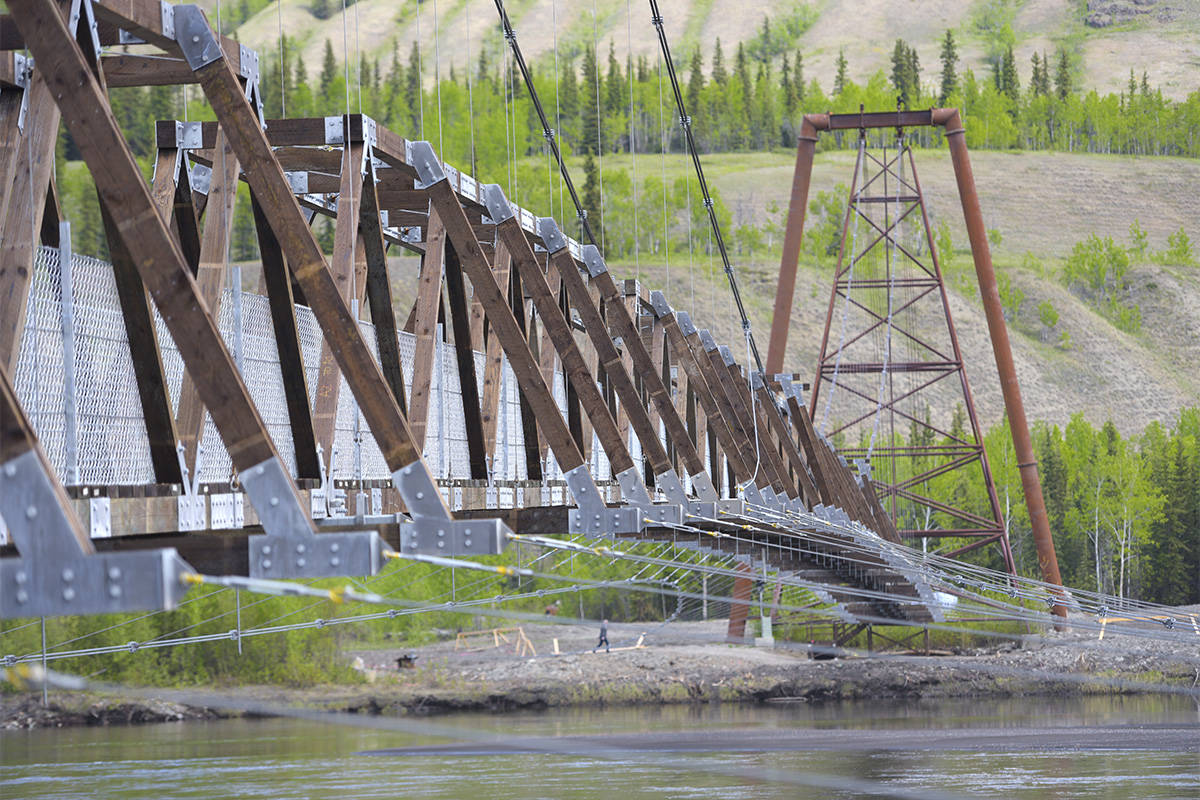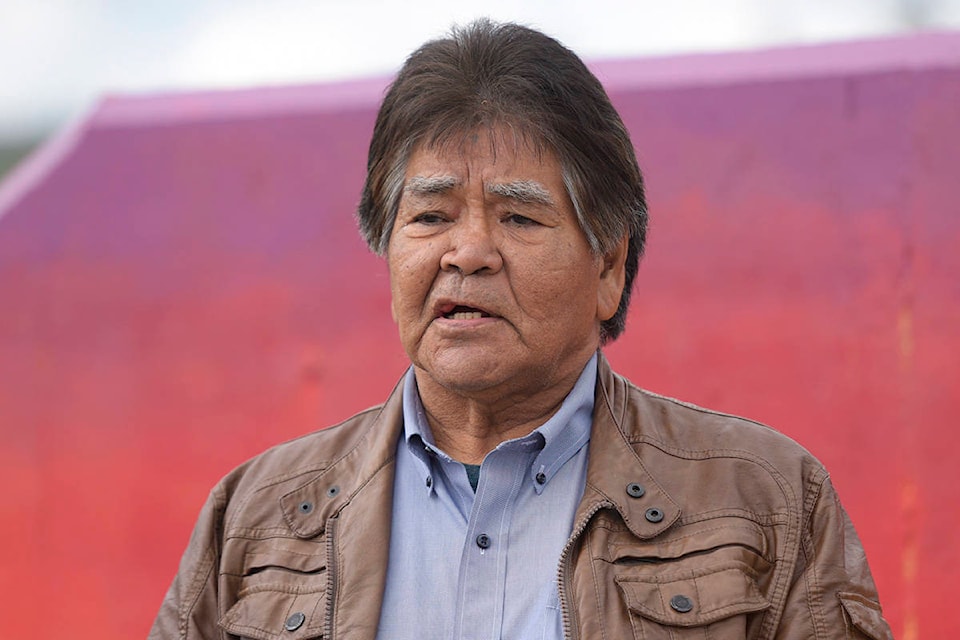The Ross River footbridge across the Pelly River reopened to pedestrian use on June 8 nearly six years after it was initially closed.
Jack Caesar, chief of the Ross River Dena Council, Community Services Minister John Streicker, and Yukon MP Larry Bagnell were at the event, along with approximately 100 members of the community — and two tourists from Texas — for the official reopening.
The total cost for the project, including initial repairs to stabilize the bridge, is approximately $5.5 million.
Caesar said the bridge plays a crucial role in the community.
“This bridge, over time, has filled the needs of our people,” said Caesar. “The hunting practices, the rituals on the other side, the drumming and the hand games – whatever it is that brought everybody together to the village.”
“Today we’re celebrating this new bridge that we can utilize now and hopefully everybody has … peace of mind that we have this bridge here once more to walk back and forth and share the old memories with the elders that had always done [so] previously.”
Although a goal of the federal government has been to build infrastructure, Bagnell said this particular project was different because of the role the bridge plays.
“It’s a part of your community to get you hunting and fishing,” said Bagnell. “I’ve done many, many projects around the Yukon, but this one is special because it’s part of your history.”
As far as the maintenance and management of the bridge, Streicker said the Yukon government will continue to care for the bridge but that it would likely fall under the purview of the Department of Highways and Public Works.
Streicker said Community Services initially took on the project because the department was already involved in other infrastructure projects and was working with Ottawa for funding.
The final phase of the project, initially pegged at $3 million, ended up costing $4 million after bids came back much higher than anticipated.
The Yukon government agreed to pay the additional $1 million for the project in September 2017.
Streicker said safety was the primary factor in the additional cost.
“It’s an old bridge and as we got deeper into the project, we uncovered more things, so the extra costs were about making sure safety was there,” said Streicker. “Luckily those things didn’t compromise the historic feel of the bridge, so it just became a choice that we had to make as we went into it.”
The bridge was a major priority for the community, said Streicker.
“When we first started talking to the community and chief and council, we asked if this was their priority and it was — not their only priority — but a big priority for them,” said Streicker.
First built to carry an oil pipeline by the U.S. Army in 1944, the bridge was later converted for pedestrian use.
The bridge was initially closed to the public in August 2012, and following an engineering report in September 2013, the bridge stairs were removed and the Yukon government at the time said the bridge would be demolished.
Protests began in March 2014 with residents camping out on the Pelly River under the bridge, leading to a decision from the Yukon government to begin repairs at an initial cost of $1.4 million to stabilize the north and south towers.
Construction on the bridge was completed by Surespan Construction Ltd. of North Vancouver.
Contact John Hopkins-Hill at john.hopkinshill@yukon-news.com

